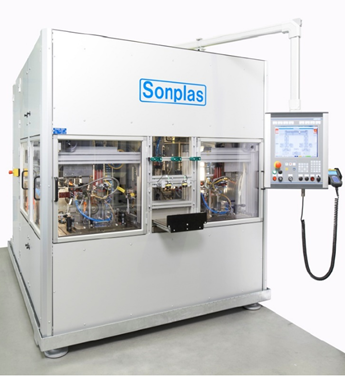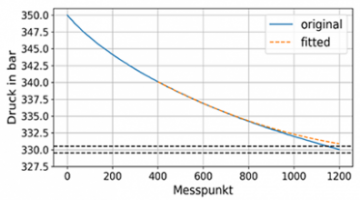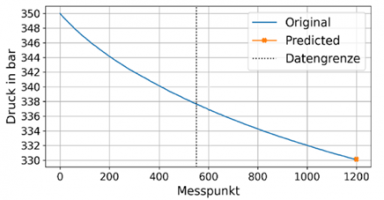High-pressure petrol pumps are subjected to a sequence of various function and performance tests at the end of the production process. One of the particularly important and time-consuming tests in this end-of-line test (EOL test) is the leakage measurement. Shortening the test sequence has considerable potential to save time and money here.
Sonplas has dedicated itself to tapping this potential with its internal innovation project. The aim here was to forecast the measurement result of the pressure drop test of high-pressure petrol pumps as early as possible and with a maximum tolerance of 0.5 bar. Different machine learning model approaches, such as simple function equations and complex models such as deep neural networks, were compared with each other for this.

One of Sonplas ´ test benches for GDI high-pressure petrol pumps
Sonplas GmbH is deeply rooted in the automotive industry, with testing equipment that guarantees the quality of many components being an important part of the portfolio. One of these systems is the test bench for high-pressure petrol pumps with direct injection, also called GDI high-pressure petrol pumps. After pressurisation by the machine, the pressure drop is then measured in the manufacturer-specified time range and a decision is made on the basis of the pressure drop as to whether a pump is to be rated as good or bad. The problem here is that the machine cannot perform any other additional tests or tasks within the waiting time, so merely “waits out” the time. This innovation project aimed to reduce testing time by using AI algorithms.
Four different AI models were compared in terms of precision and savings potential. The basic approach is known as the time series analysis, which uses past data to predict future trends. Specifically, measurement data from past pressure tests were trained here. This training process aimed to predict the course and thus also the end of the curve without having to carry out the entire measurement. The algorithms therefore learn to predict the complete course of a pressure drop test with only a few data points. This prediction should significantly shorten measurement time.
- Left: Original characteristic curve and fitted polynomial equation
- Right: Original characteristic curve and point prediction with data points from 0 – 550
The results that the innovation project managed to achieve with its best model speak for themselves: the best model, with only 550 data points (see figure on the right), is able to predict the result within the required tolerance of 0.5 bar. These 550 data points correspond to only 5.5 seconds, out of the original 12 seconds of measurement. This meant it was possible to more than halve the measurement time. According to current technical standards, the 0.5 bar corresponds to the order of magnitude of the measurement uncertainty resulting from the combination of machine and test specimen and can therefore be considered a very good result. A saving of 6.5 seconds per test specimen results in enormous added value for the customer-based output and has fully met the innovation project’s expectations.

